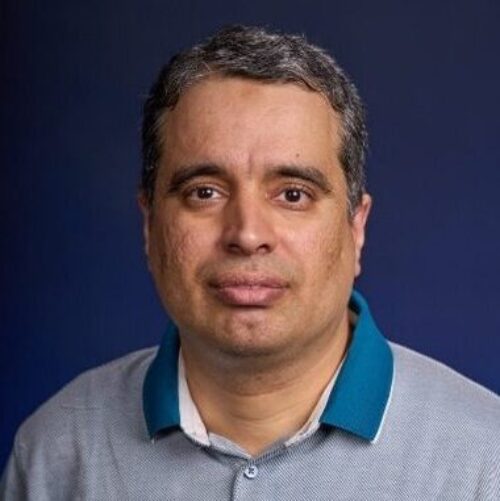CSE Community Seminar | October 3, 2025

Abstract
This talk presents a physics-embedded machine-learning framework for surrogate modeling of rarefied gas dynamics across increasing levels of complexity. We begin with the BGK kinetic relaxation problem and show that recasting the learning task in terms of perturbations from the Maxwell–Boltzmann (MB) equilibrium yields a numerically stable baseline. A fully connected network trained on high-fidelity DSMC samples reproduces the MB speed distribution of argon. Enforcing the physical boundary point drives the mean-squared error below 10⁻⁵, cutting inference time from minutes per DSMC run to milliseconds.1
Building on this foundation, we deploy physics-constrained Deep Operator Networks (DeepONets) for two challenging settings. First, for mono-atomic and diatomic shocks, a multi-output architecture with learnable Fourier features recovers the full density–velocity–temperature profile in argon and accurately extrapolates from training on M = 1.4–1.9 to M = 2.0 and 2.5. For a rarefied polyatomic gas (pseudo-CO₂) at Mach 5, adding physical constraints eliminates overshoot and remains accurate for previously unseen bulk-to-shear viscosity ratios (μb/μ = 50, 500). Second, for two-dimensional rarefied hypersonic flow over a cylinder, an ensemble of physics-constrained DeepONets trained only at M = 5, 7, 9 generalizes to both interpolation and extrapolation up to M = 10. A custom-weighted loss improves pressure prediction, and ensemble-based uncertainty quantification highlights high-gradient regions such as shock waves. Finally, for the lid-driven cavity spanning a wide range of Knudsen numbers, a “family-of-experts” strategy with log-space interpolation reconstructs unseen-Kn fields with < 2% spatial error.2
Together, these results demonstrate that embedding physical structure into neural operators enables the creation of accurate, stable, and computationally efficient surrogates, paving the way for multidimensional, high-speed, rarefied-flow design and optimization.
- Roohi, E.*, Shoja-sani, A., Data-Driven Surrogate Modeling of DSMC Solutions Using Deep Neural Networks, Aerospace Science and Technology, 168PA, 110785, 2026. ↩︎
- Roohi, E.*, Shoja-Sani, A., Goshayeshi, B., & Peyvan, A., Learning rarefied gas dynamics with physics-enforced neural networks, under review. ↩︎